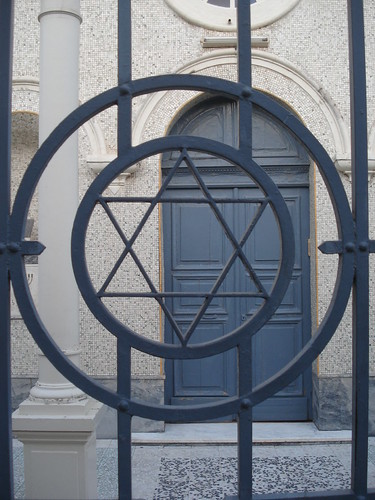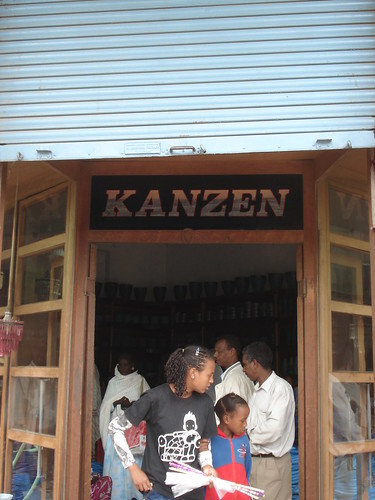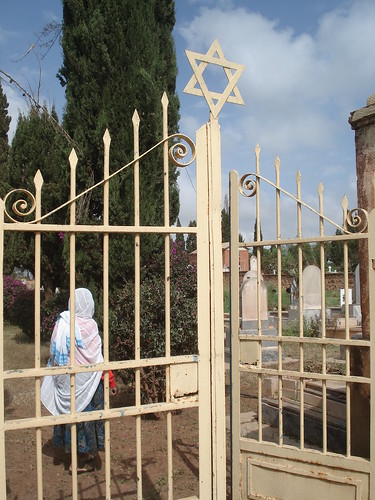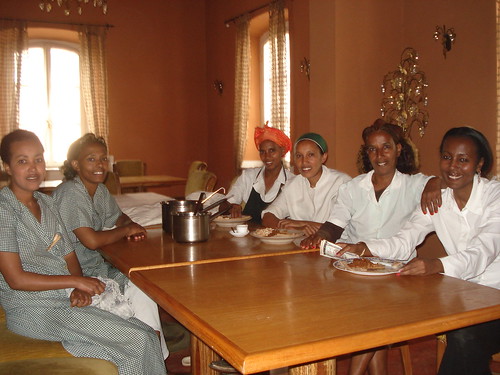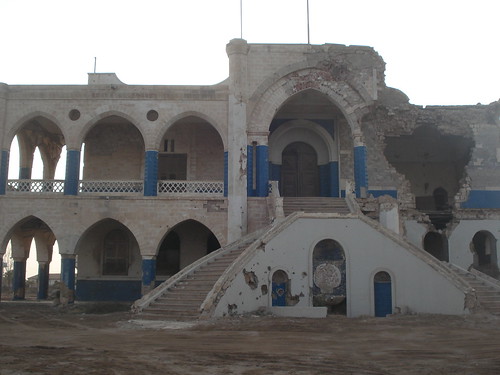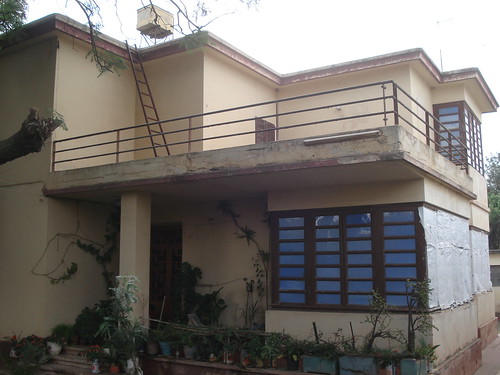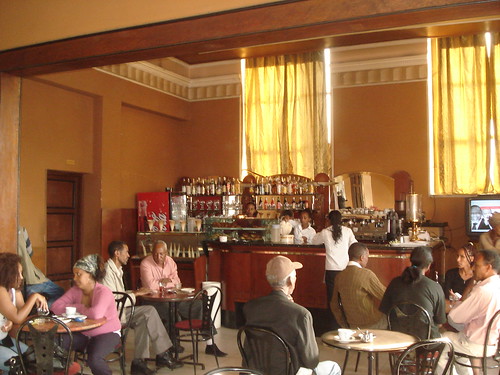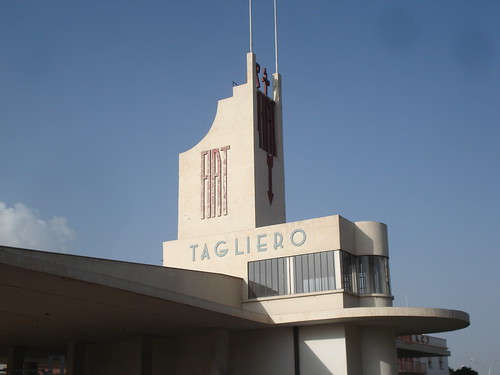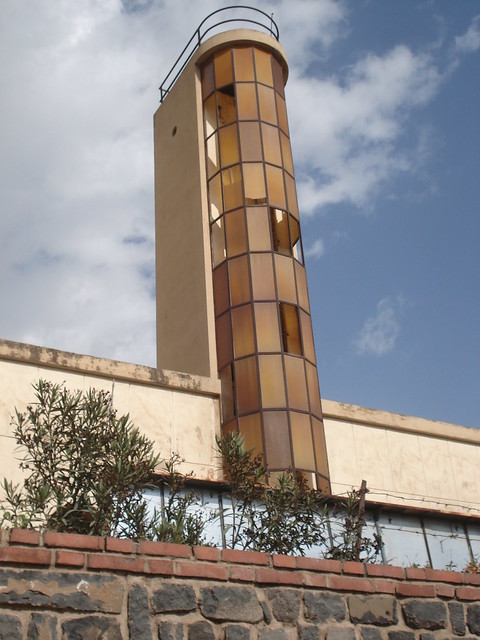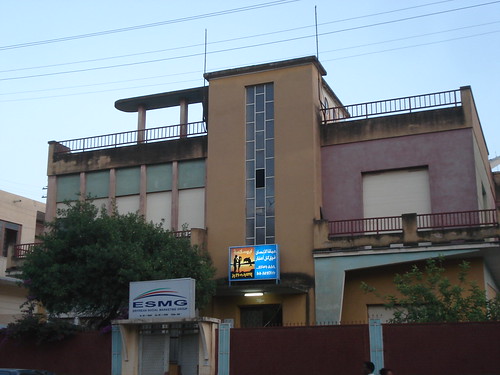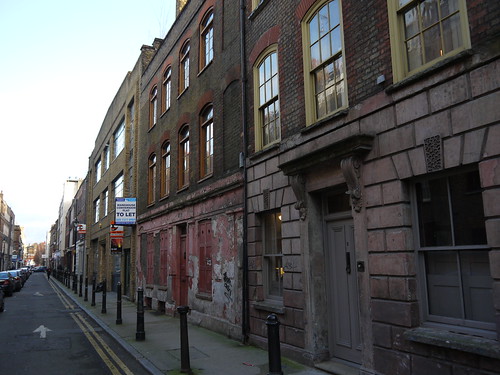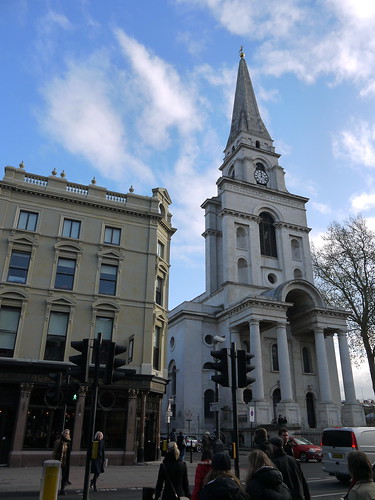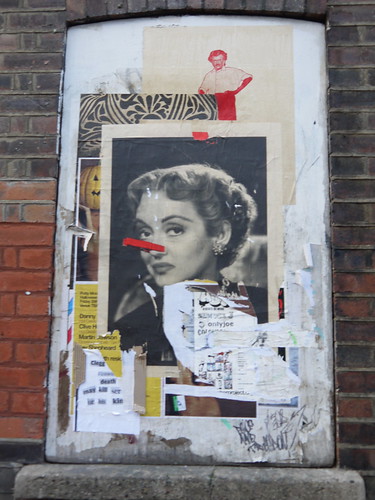Polish born artist Josef Herman is best known in this country for his paintings of Welsh miners, having lived in Ystradgynlais, South Wales from 1944-1955. The current exhibition at the Ben Uri Gallery in north London covers the years 1938-44 which he spent moving from Warsaw to Brussels to Glasgow and then London, to escape virulent anti-semitism in Warsaw and then the invading Germans in Brussels.
Herman was from a poor background, his father was a cobbler and the family's living conditions are known to have been difficult. This is reflected in his life long interest in and representation of working people in his art. "The cobbler, my father" from 1943 shows the older Herman at work at his bench in a sparse, ill-lit and cold looking room whilst other works depict poor musicians playing for money and the seemingly Chagall influenced "The organ grinder" from 1940-41 with the sallow, sunken cheeked player accompanied by a wise owl adding a strange note of comedy.
One of very few works to have survived from his time in Brussels, "The Gambler" from 1938 shows two intense looking men playing dice in the foreground of the picture with serious drinking going on in the background. Again, the room is sparsely furnished and the drinkers are shown as being small, sad and stooped. Herman was also keen to show more joyful aspects of working class life and the picture "Jews dancing" from 1940 shows a group of shtetl Jews - men and women - dancing to the music of a bearded violinist, one moved to dance on the hastily cleared table.
A number of his paintings have been compared to Chagall's works. Herman was very conscious of this comparison, did not want it and came to dislike it, at a later date, going so far as to destroy several works that he felt were too "Chagall-esque". It is interesting that many of these pictures came in the early 1940's at a time when he would have had little real news of his family still in Poland. Perhaps he was trying to recreate a world that was in the process of being destroyed forever - including, he would come to learn, his entire family. This also sparked the series of works included in the exhibition called "A memory of memories" in which he recreates his childhood and the pre-war Jewish Poland he remembered.
During the first half of the 20th century, a number of artists produced sets or designed costumes for theatre and ballet. Goncharova, Bakst and Rodchenko spring to mind in particular, their work for and with the Ballet Russes. Herman was no exception, but went a step further, conceiving the decor, costumes, set and narrative for a short ballet called "Ballet of the palette". The palette which he described as a "fantasy" focuses on two paint brushes, one large and lazy and the other small and energetic.
Other characters include the colours pink, blue, white and green with the stage acting as a palette. The ballet was performed by the Celtic Ballet Club and surviving photographs show references to the purimspiel that Herman would have been familiar with from his childhood. The ballet was last performed in 1945. With the Ben Uri exhibition, it would be timely for a revival - the ballet is only 30 minutes long, any takers?
Like many emigrees, Herman sought the company of his countrymen during his early days in Britain. In Glasgow he became friends with the Estonian born Jewish sculptor Benno Schotz and was reunited with Jankl Adler, whom he had known in Warsaw. Several Yiddish writers were also in his circle including Itzik Manger who he painted in 1940. This expressionist portrait is my favourite work in the exhibition and fits well Herman's description of Manger - "His face was green, his black eyes shone out from his red eyelids. But his nervous vitality was undiminished. He could be offensive, tender, spiteful, amusing and exciting, but never a solvable as his poetry suggest him to be".
Later on, during his time in London, he became involved in the Ohel cultural organisation which was based in Gower Street in the West End. Ohel (meaning "tent" in Hebrew) sought to provide cultural opportunities and expression for Polish, Yiddish and German speaking refugees and provided a library, meeting rooms, cafe and an impressive programme of concerts, readings and exhibitions. It is likely that Herman would have come into contact here with Bomberg, Bloch and Meidner and it is known that he was familiar with the writer Avraham Stencl, producing his portrait in 1946.
The exhibition records a key period in this artists life and development, recreating a world now lost forever. He went on to live until February 2000, having coped with yet more tragedy in his life with the early death of his daughter in 1972. He was much honoured in his adopted country, being awarded an OBE for his services to British Art and was elected as an Honorary Senior Royal Academician in 1990. Several of his works are held in the Tate Britain gallery.
The Ben Uri Gallery was founded in 1915 by Russian emigre artist Lazar Berson at a Whitechapel Restaurant. Its current home is in Boundary Road, St. John's Wood. It has an extensive and extremely important collection of works by Jewish artists. In its current location it offers a programme of world class temporary exhibitions. The current exhibition, which has an excellent catalogue, runs until March 22nd. For more details check the Gallery website or the Josef Herman Foundation website.
http://www.benuri.org.uk/
http://josefhermanfoundation.org/
Herman was from a poor background, his father was a cobbler and the family's living conditions are known to have been difficult. This is reflected in his life long interest in and representation of working people in his art. "The cobbler, my father" from 1943 shows the older Herman at work at his bench in a sparse, ill-lit and cold looking room whilst other works depict poor musicians playing for money and the seemingly Chagall influenced "The organ grinder" from 1940-41 with the sallow, sunken cheeked player accompanied by a wise owl adding a strange note of comedy.
One of very few works to have survived from his time in Brussels, "The Gambler" from 1938 shows two intense looking men playing dice in the foreground of the picture with serious drinking going on in the background. Again, the room is sparsely furnished and the drinkers are shown as being small, sad and stooped. Herman was also keen to show more joyful aspects of working class life and the picture "Jews dancing" from 1940 shows a group of shtetl Jews - men and women - dancing to the music of a bearded violinist, one moved to dance on the hastily cleared table.
A number of his paintings have been compared to Chagall's works. Herman was very conscious of this comparison, did not want it and came to dislike it, at a later date, going so far as to destroy several works that he felt were too "Chagall-esque". It is interesting that many of these pictures came in the early 1940's at a time when he would have had little real news of his family still in Poland. Perhaps he was trying to recreate a world that was in the process of being destroyed forever - including, he would come to learn, his entire family. This also sparked the series of works included in the exhibition called "A memory of memories" in which he recreates his childhood and the pre-war Jewish Poland he remembered.
During the first half of the 20th century, a number of artists produced sets or designed costumes for theatre and ballet. Goncharova, Bakst and Rodchenko spring to mind in particular, their work for and with the Ballet Russes. Herman was no exception, but went a step further, conceiving the decor, costumes, set and narrative for a short ballet called "Ballet of the palette". The palette which he described as a "fantasy" focuses on two paint brushes, one large and lazy and the other small and energetic.
Other characters include the colours pink, blue, white and green with the stage acting as a palette. The ballet was performed by the Celtic Ballet Club and surviving photographs show references to the purimspiel that Herman would have been familiar with from his childhood. The ballet was last performed in 1945. With the Ben Uri exhibition, it would be timely for a revival - the ballet is only 30 minutes long, any takers?
Like many emigrees, Herman sought the company of his countrymen during his early days in Britain. In Glasgow he became friends with the Estonian born Jewish sculptor Benno Schotz and was reunited with Jankl Adler, whom he had known in Warsaw. Several Yiddish writers were also in his circle including Itzik Manger who he painted in 1940. This expressionist portrait is my favourite work in the exhibition and fits well Herman's description of Manger - "His face was green, his black eyes shone out from his red eyelids. But his nervous vitality was undiminished. He could be offensive, tender, spiteful, amusing and exciting, but never a solvable as his poetry suggest him to be".
Later on, during his time in London, he became involved in the Ohel cultural organisation which was based in Gower Street in the West End. Ohel (meaning "tent" in Hebrew) sought to provide cultural opportunities and expression for Polish, Yiddish and German speaking refugees and provided a library, meeting rooms, cafe and an impressive programme of concerts, readings and exhibitions. It is likely that Herman would have come into contact here with Bomberg, Bloch and Meidner and it is known that he was familiar with the writer Avraham Stencl, producing his portrait in 1946.
The exhibition records a key period in this artists life and development, recreating a world now lost forever. He went on to live until February 2000, having coped with yet more tragedy in his life with the early death of his daughter in 1972. He was much honoured in his adopted country, being awarded an OBE for his services to British Art and was elected as an Honorary Senior Royal Academician in 1990. Several of his works are held in the Tate Britain gallery.
The Ben Uri Gallery was founded in 1915 by Russian emigre artist Lazar Berson at a Whitechapel Restaurant. Its current home is in Boundary Road, St. John's Wood. It has an extensive and extremely important collection of works by Jewish artists. In its current location it offers a programme of world class temporary exhibitions. The current exhibition, which has an excellent catalogue, runs until March 22nd. For more details check the Gallery website or the Josef Herman Foundation website.
http://www.benuri.org.uk/
http://josefhermanfoundation.org/
